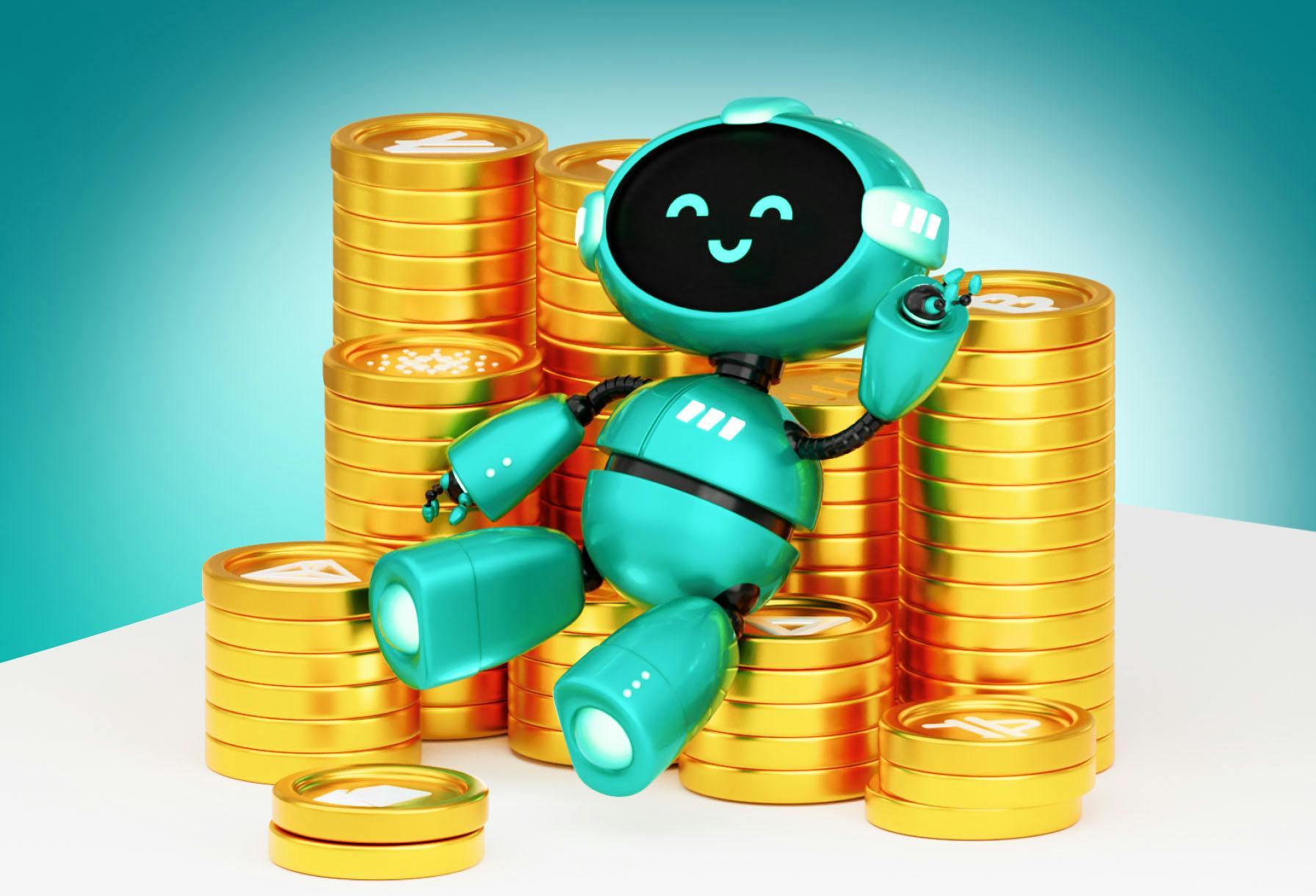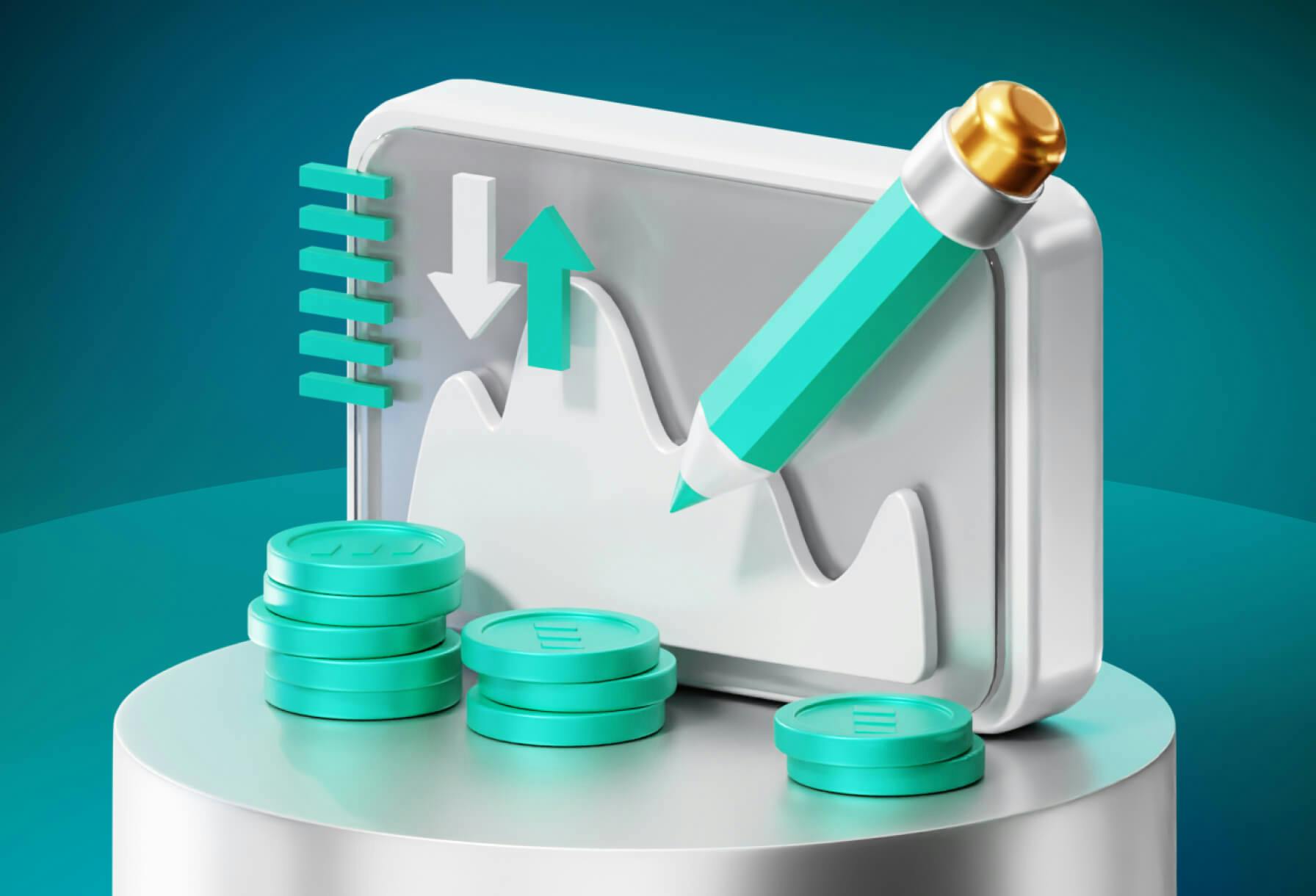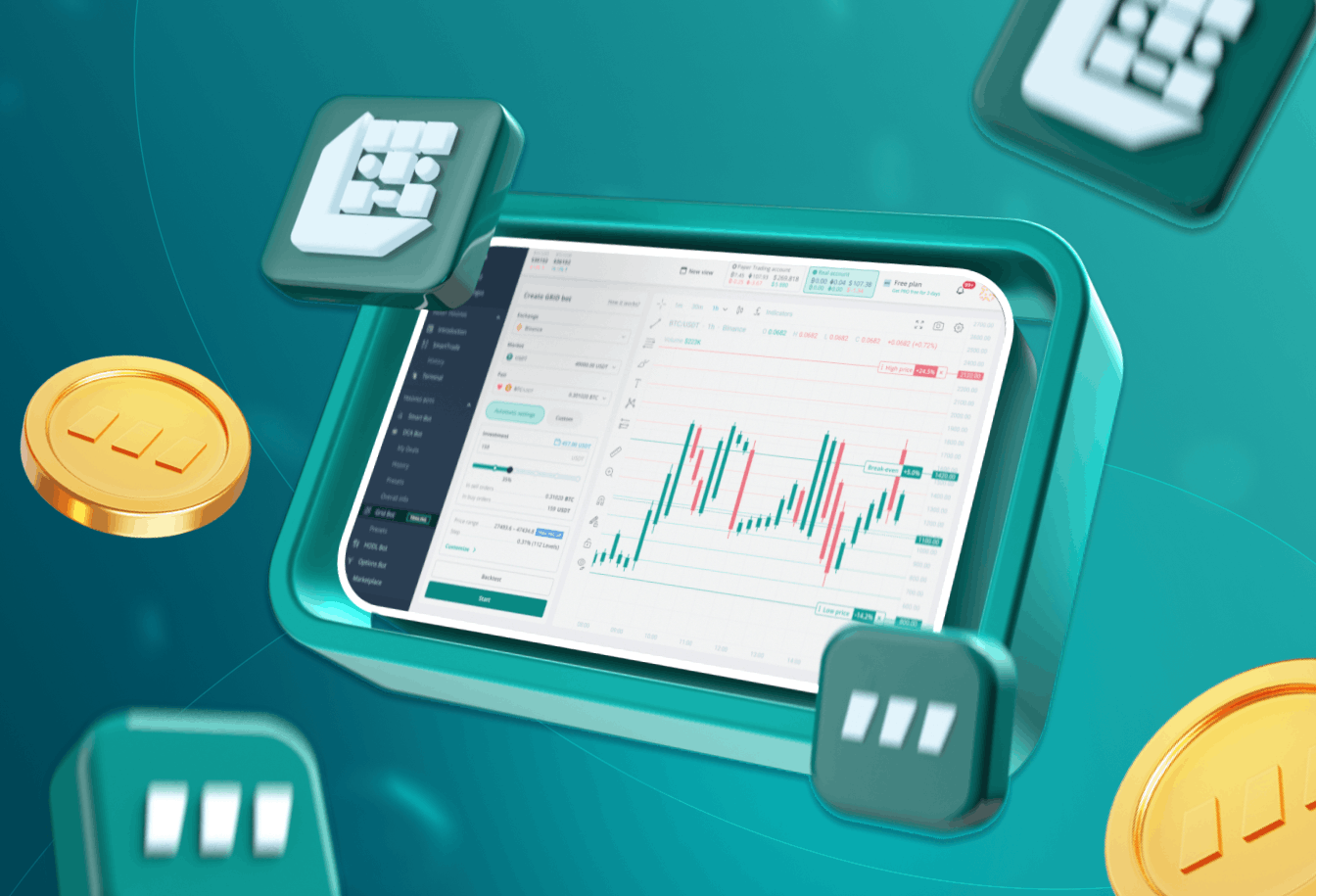
- All
- Tools
- Analytics
- Technical Analysis
- Trading
- Blockchain
- DeFi
- Guides
- Company News
- Educational
- Opinion
- Price Predictions
- Market News
- News
- Trading cases
- Practical guides
- Exchanges
- Trading signals
- Cryptocurrency
- Crypto bots
- Other
Become a crypto master
Learn everything about crypto,
trading and bots

Who is the Fastest? The Solana Ecosystem is Growing Rapidly
The Solana blockchain is one of the most promising ecosystems out there, but does it have enough resources to develop into anything comparable to Ethereum? Perhaps…
Start Trading on 3Commas Today
Get full access to all 3Commas trading tools with free trial period

This is a dive into the Solana ecosystem. We touch on what Solana is, how it works on a deeper level, and what Solana projects are worth your attention.
Solana Ecosystem: At a Glance
- Solana is one of the fastest blockchain in the world, hosting various protocols
- Proof-of-Stake [PoS] consensus allows up to 700 000 transactions per second
- Solana chain employs a Proof of History [PoH] on top of Proof-of-Stake [PoS] to ensure high throughput and processing power
- Proof of History mechanism generates a new block each 400 milliseconds based on the cryptographic clock concept, timestamps, and SHA256 function
- SOL total supply is 529,87 million tokens, while 354,78 million tokens circulate. Most of the tokens are node validator rewards
- The ecosystem hosts multiple Solana projects across gaming, DeFI, Infrastructure, and NFT verticals
What is the Solana Ecosystem?
Solana chain is a top-tier smart-contract platform with unmatched transaction speed. The current rate of the network is around 62,000 transactions per second, many times faster than any other blockchain. Each block is produced in 400 milliseconds without sharding. For a deep dive, you can check Solana docs.
Solana blockchain was launched in March 2020 by Solana Labs, and the entire viability of the network is overseen by the nonprofit Solana Foundation, based in Switzerland. In 2017, Anatoly Yakovenko [co-founder] published the whitepaper outlining the principles of the new Proof of History mechanism, which he developed himself.
With Proof of History and a number of other innovative solutions, the Solana chain aims to solve blockchain scalability problems by achieving maximum transaction speed and efficiency.
How Does the Solana Ecosystem Work?
Solana's key operating mechanism is its Proof of Stake (PoS) consensus system, which the BFT Tower Consensus backs. It's a variation of the Practical Byzantine Fault Tolerance (PBFT) system, which allows distributed networks to achieve consensus despite attacks from malicious nodes.
Consensus Mechanisms
Blockchain networks use two basic consensus mechanisms, Proof of Work and Stake. In PoW, all nodes (active network elements) must do some work to calculate a new block's hash. This uses a large amount of energy, and in the end, the node with more computational power "wins."
Proof of Stake is different: nodes do not need to calculate anything in this mechanism. Still, they need to put some amount of already existing cryptocurrency into the stack and thus get approval from the network to release new blocks. The more money deposited the more trust in that node. You can learn more about PoW and PoS consensus mechanisms in our article about mining.
How Proof of History Works
The cornerstone of Solana's operating principle is the innovative Proof of History mechanism. Many call it a standalone consensus mechanism, but that's not quite true: it's more like a modification of the Proof of Stake mechanism.
The underlying principle of PoH is to synchronize network nodes in time before new blocks are validated. According to the creator, the main problem with PoW and PoS networks is the synchronization of active network elements and the inability to agree on the order to verify new blocks quickly.
Think of the Bitcoin network. Nodes are not time-synchronized and often do not agree among themselves on what order the blocks are put forward for consideration; they have to perform several additional operations to establish this order. All this takes a considerable amount of unnecessary energy and time.
This kind of problem has been seen before in the centralized world. For example, Google also wondered how to increase the efficiency of databases — a tech giant introduced the atomic clock concept to solve the problem. However, maintaining such a solution costs a lot of money and requires an additional workforce, which is unsuitable for decentralized networks.
Solana Ecosystem & SHA 256
Solana blockchain has implemented its own solution that is as suitable as possible for blockchains: each SHA-256 record in the network — in addition to its own hash and the previous block hash — is assigned a unique timestamp using the Verifiable Delayed Function [VDF, Verifiable Delay Function].
SHA-256 [Secure Hashing Algorithm] is the most popular mechanism for assigning unique hashes to blocks; it's used in the Bitcoin network. This feature requires a certain number and sequence of steps to evaluate a transaction and ultimately produces a unique output visible to all network participants. This output contains information about how far a block has traveled and in what time frame.
This way, nodes can create new blocks without exchanging data with thousands of other active nodes every second. They can check on the output of the VDF function - it guarantees that the information in the block is correct. It also eliminates the possibility of conflicting or repeating output in blocks.
A Deeper Dive Into PoW
PoW network working structure may cause multiple nodes to find the same block simultaneously. The point is only the first node gets rewarded. Such an event splits the block in two, and the longer one survives. Other miners would not know about the wasted power until the very last moment.
Proof of History eliminates this possibility because before checking blocks, validators look at the VDF function, which records the path the function took and how long it took.
Thus, this mechanism frees up a huge amount of resources that are sent directly to transaction validation — thanks to it, Solana has a disproportionately high throughput. It takes only 400 milliseconds (0.4 seconds) to create one block [2.5 blocks per second.]
The number of transactions per second on Solana reaches 65,000. By comparison, the Bitcoin network can process up to 4.5 transactions per second, while Ethereum is capable of about 20. In theory, Solana could reach speeds of 700,000 transactions per second, but due to hardware limitations, the throughput is temporarily underestimated. Solana's transaction speeds are the closest the cryptocurrency world has to the transaction speeds of the traditional financial system.
Transaction Costs
According to Solana's official website, on average, one transaction costs the network < $0.0002, while Ethereum can range from $15 to $200, depending on network congestion. The transaction rate is the main reason, as the higher validating efficiency is, the less competition for each new block would be. Hence, lower fees within the network.
Terms for New Validators
Another distinguishing feature of the Solana network is the relatively low entry threshold for new validators. It has grown significantly, though.
Before the Merge happened, you'd need a minimum of 32 ETH to become a validator within the Ethereum network. Assuming you had to stake, it's not quite an affordable way to contribute. Solana only requires computational power from your side. The recommended setting may vary across the board, but generally, you would need 12 cores of CPU, 128 MB RAM, a third-generation NVME SSD, etc. Learn more about Solana ecosystem validator requirements here.
Solana Ecosystem: The Pros and Cons
Let’s have a look at the Solana ecosystem’s pros and cons to instantly understand what you can expect using or investing in the chain.
Solana Ecosystem Pros
- Limited supply and burns — 50% of all transaction fees are burned, balancing the volumes in circulation.
- A full-fledged smart-contract network. Solana chain is a standalone blockchain without parachains or sidechains; it does not depend on other networks, unlike second-tier solutions like Polygon.
- The potential of Proof of History. Solana was the first to implement the PoH mechanism and other technical innovations whose effectiveness is confirmed daily.
- Institutional backup. Solana is also gaining increasing support from institutional investors led by Alameda Research, a16z, and beyond.
Solana Ecosystem Cons
- Lack of Decentralization. Centralization remains an issue as there are a limited amount of 2,000 validators narrowly spread across geographies
- Questionable schedules. Unattractive distribution and emission schedules
- Circulating economy. Distribution results in dilution of circulating supply
- Runtime. Congestions within the network may cause sporadic downturns
Notable Solana Projects
Many of the Solana-based services and applications are already ranked in the world's top ratings by sales volume and TVL [Total Value Locked].
Squads Solana project [Web3 infrastructure] and StepN [P2E lifestyle app] are among the top representatives. Solana also supports decentralized cryptocurrency exchanges [DEX] such as Orca, Saber [Stablecoin exchange], and Serum [one-of-a-kind DEX exchange that operates through an order book instead of a liquidity pool].
Some of the best-known Solana NFT projects include Magic Eden, Solanart, and MetaPlex. Solana is also integrated into the NFT marketplace for several exchanges, where NFTs can be purchased directly for SOL. In addition to apps and services, Solana already integrates quite a few leading altcoins and stablecoins, such as USDT, USDC, and side coins like Litecoin, Polkadot.
Solana Ecosystem: DeFi Projects
Some of the DeFI protocols you can use within the Solana ecosystem include the following.
Solana Ecosystem: Wallets Projects
Non-custodial wallets enable safe storage for your crypto assets within the Solana ecosystem. Phantom is the most popular Solana wallet project you can install and use as a browser extension. More related Solana wallet projects and token storage solutions include.
Solana Ecosystem: Stablecoins Projects
Solana works toward its own payment system called Solana Pay.
Solana Ecosystem: NFTs Projects
Here is the list of Solana projects related to NFTs.
Solana Ecosystem: Games Projects
Solana Ecosystem hosts multiple gaming projects, including the following games.
Solana Ecosystem Compared To Others
Let’s briefly pit Solana vs. Polkadot and Ethereum in direct competition to understand the perspective of each.
Polkadot vs Solana
Polkadot vs Solana competition has its own points, as scalability and developer flexibility are critical features of Solana. It’s less of a case for Polkadot, though. Despite all user interface and friendliness issues, Polkadot developers are doing a great job scaling blockchains and letting developers send data seamlessly across networks.
It’s quite hard to compare Polkadot to Solana because Polkadot focuses on communication across networks, while Solana targets speed and accessibility. Blockchains rather complement each other than compete over the same market.
Solana vs Ethereum
Ethereum network is another blockchain based on smart contracts and everything around them. The network has the top market capitalization among all altcoins. Ethereum is known for high liquidity [order flow], first fully-fledged NFTs, and high gas fees.
High gas has conceived scaling solutions like Polygon, Avalanche, Polkadot, and Solana. But Solana gained so much traction that it overgrew the scaling solution status to become a standalone ecosystem. Ethereum is more prevalent among DeFi & NFTs niches, while Solana dominates the Web3 gaming vertical.
At least 80% of NFTs stored on-chain are Ethereum NFTs, making Ethereum the largest NFT ecosystem out there. Such popularity plays right into Vitalik Buterin’s hand [core developer], as most investors are not overly passionate about blockchain technology. They have lots of other stuff to do and try to make NFT-related matters as simple as possible. The magic of associations is what makes Ethereum NFTs so powerful. When looking for an NFT marketplace, the first one you would run into is usually either OpenSea, Rarible, Nifty Gateway.
NFT — Ethereum, Marketplace — OpenSea, Collection — BAYC. As simple as that. People like simplicity, and so do they like Ethereum NFTs.
Ethereum spearheads the NFT market with a big pool of buyers and sellers. The fact symphony sounds a lot louder when creators mint a collection and get more exposure, ready-to-buy folks, bidders. You shouldn’t take that for granted, though, as most collections are buried under tons of mediocrity no one would ever like to buy or bid for.
The moon’s far side is congestion caused by exponentially growing activity. Each time the network’s activity increases, Ethereum suffers majorly. Transaction backlogs cause wars over gas fees, or gas wars. The example lies no further than the recent Otherside mint. The mad rush burnt over $157 million equivalent of ETH [gas fees in total]. In other words, if you wanted to mint a pair [2] of Otherside NFTs, you would have to pay $14,000 [7.37ETH as of writing] just to confirm your transaction. Moreover, no one guaranteed that you would get your NFTs.
The Future of the Solana Ecosystem
Solana is blazingly fast, and that’s a bulletproof fact barely anyone can argue with. The first reason many developers and users bet on Solana is the speed at which it conducts transactions. Short block time, high TPS [transaction per second] throughput, flexible consensus, and its overall vision leave no chances to many others. The typical block speed of Solana outpaces Ethereum 24 to 29 times, around the same for Solana vs Polkadot.
Solana | Ethereum | Polkadot | Visa |
0.33 sec per block or up to 180 blocks/min | 10 to 14 sec per block or up to 6 blocks/min | 12 sec per block or up to 5 blocks/min | No blocks |
3900 TPS with the upper limit of 65,000 TPS | 10 TPS | 1000 TPS | 1700 TPS, with the upper limit of 24,000 TPS |
The faster Solana can conduct transactions, the stronger the network and the more appealing it is to developers seeking for mass product adoption.
Low fees
Solana has low gas fees and rare spikes. The gas fees don't spike much, even for top-notch collections and hyped mints. Ethereum can’t boast the same user experience.
Ethereum gas launched the snowball effect for alternative solutions, including NFT collections. Magic Eden has the highest number of on-chain transactions than any other marketplace. Majorly because users feel quite comfortable doing so without overspending. The average of a hundredth dollar gas does its job winning enormous fame for Solana.
User Experience [UX]
Snappy and polished are two words to describe UX trading Solana NFTs. Simplistic layout, eye-pleasing color sets, and blazingly fast transactions contribute to a crucial aspect many developers underestimate — users and their experience.
Blockchain is not about the technology per se, but the value it can add and the experience it can bring to make users’ lives easier and better. Trading on Magic Eden is frictionless, one of the many reasons users want to return and repeat their pleasurable experience. The price factor plays out pretty well per NFT price and low gas.
FAQ
Solana ecosystem is a standalone blockchain to ensure composable building and scaling for startups and established projects alike. Multiple factors like low fees, a high percentage of circulating SOL supply, and blazingly fast transactions drive more projects into Solana.
As a top smart-contract platform, blockchain ecosystem, and open protocol, Solana is home for multiple projects. Projects like MagicEden [NFT marketplace], Saber [Cross-chain DeFi liquidity provider], HidraSwap [DEX with no order book token swaps], and other notable projects benefit from the low-cost transactions. You can check the full list of projects on the Solana website.
The Solana ecosystem hosts decentralized finance and gaming projects, so you can find a wide range of coins supported. Solana mainnet supports in-game currencies and governance tokens like POLIS [Star Atlas], GMT [STEPN], and WLKN [Walken], but it’s also known for its ecosystem of interconnected exchanges. DeFi enthusiasts may use ORCA, SRM, SBR, RAY, and more tokens.
Solana chain is a Layer-2 scaling solution powered by an advanced consensus mechanism, tower BFT algorithm, and a wide network of validator nodes. Altogether they leverage the cutting-edge no-sharding solutions to bring industry-leading speed via the web-scale blockchain. Solana foundation goes far beyond the blockchain industry, though.
Comparing Polkadot vs Solana is rather difficult due to many consideration angles, including transaction throughput, gas fees, node operators, core innovations, transparency reports, network congestion, and more. Solana may win in some aspects, while giving up the others. Solana is more popular overall, though.
Exploring the Solana Ecosystem in 2023: A Beacon of Innovation and Efficiency
In 2023, the Solana ecosystem stands out as a paradigm of innovation, scalability, and high performance in the blockchain universe. It has evolved to host a myriad of decentralized applications, protocols, and crypto projects, serving as a fertile ground for developers and users seeking advanced blockchain solutions.
Scalability & Performance:
Solana’s reputation is anchored in its impressive scalability and high throughput, capable of processing approximately 50,000 transactions per second (tps). This unparalleled performance is attributed to Solana’s unique Proof-of-History (PoH) consensus mechanism and its optimized transaction processing architecture, eliminating bottlenecks and ensuring consistent efficiency.
Diverse DeFi Landscape:
Solana’s ecosystem is a vibrant hub for DeFi projects, offering diverse services ranging from lending and borrowing platforms to decentralized exchanges (DEXs). The ecosystem’s low transaction costs and speedy processing have made it a preferred choice for DeFi developers and users, fostering innovation and user adoption in the DeFi space.
NFT Marketplace:
In 2023, Solana has burgeoned as a prominent destination for Non-Fungible Tokens (NFTs). The ecosystem hosts a variety of NFT marketplaces and projects, facilitating the creation, exchange, and collection of digital assets. The seamless and cost-effective interactions on the platform have fueled the growth of the NFT community on Solana.
Robust Developer Community:
The ecosystem is bolstered by a dynamic and engaged developer community. The user-friendly environment, comprehensive documentation, and supportive community interactions have attracted developers from around the world, contributing to the ecosystem’s continuous evolution and expansion.
Strategic Partnerships:
Solana’s progression is also marked by numerous strategic partnerships and collaborations with various crypto projects and organizations. These partnerships have been instrumental in enhancing the ecosystem’s functionality, interoperability, and overall reach in the crypto space.
Conclusion:
The Solana ecosystem in 2023 is a testament to the transformative power of blockchain technology, offering a harmonious blend of speed, scalability, and innovation. The flourishing DeFi sector, the vibrant NFT marketplace, and the active developer community highlight Solana’s commitment to fostering an inclusive and advanced blockchain environment. As it continues to forge partnerships and expand its horizons, Solana is poised to remain at the forefront of the blockchain revolution, driving the industry towards new heights of excellence.

A proven leader, successful at establishing operational excellence and building high-performance teams with a sharp focus on value creation and customer success.





